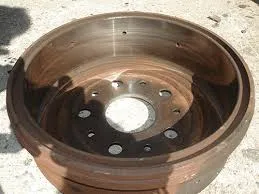
-
 Afrikaans
Afrikaans -
 Albanian
Albanian -
 Amharic
Amharic -
 Arabic
Arabic -
 Armenian
Armenian -
 Azerbaijani
Azerbaijani -
 Basque
Basque -
 Belarusian
Belarusian -
 Bengali
Bengali -
 Bosnian
Bosnian -
 Bulgarian
Bulgarian -
 Catalan
Catalan -
 Cebuano
Cebuano -
 Corsican
Corsican -
 Croatian
Croatian -
 Czech
Czech -
 Danish
Danish -
 Dutch
Dutch -
 English
English -
 Esperanto
Esperanto -
 Estonian
Estonian -
 Finnish
Finnish -
 French
French -
 Frisian
Frisian -
 Galician
Galician -
 Georgian
Georgian -
 German
German -
 Greek
Greek -
 Gujarati
Gujarati -
 Haitian Creole
Haitian Creole -
 hausa
hausa -
 hawaiian
hawaiian -
 Hebrew
Hebrew -
 Hindi
Hindi -
 Miao
Miao -
 Hungarian
Hungarian -
 Icelandic
Icelandic -
 igbo
igbo -
 Indonesian
Indonesian -
 irish
irish -
 Italian
Italian -
 Japanese
Japanese -
 Javanese
Javanese -
 Kannada
Kannada -
 kazakh
kazakh -
 Khmer
Khmer -
 Rwandese
Rwandese -
 Korean
Korean -
 Kurdish
Kurdish -
 Kyrgyz
Kyrgyz -
 Lao
Lao -
 Latin
Latin -
 Latvian
Latvian -
 Lithuanian
Lithuanian -
 Luxembourgish
Luxembourgish -
 Macedonian
Macedonian -
 Malgashi
Malgashi -
 Malay
Malay -
 Malayalam
Malayalam -
 Maltese
Maltese -
 Maori
Maori -
 Marathi
Marathi -
 Mongolian
Mongolian -
 Myanmar
Myanmar -
 Nepali
Nepali -
 Norwegian
Norwegian -
 Norwegian
Norwegian -
 Occitan
Occitan -
 Pashto
Pashto -
 Persian
Persian -
 Polish
Polish -
 Portuguese
Portuguese -
 Punjabi
Punjabi -
 Romanian
Romanian -
 Russian
Russian -
 Samoan
Samoan -
 Scottish Gaelic
Scottish Gaelic -
 Serbian
Serbian -
 Sesotho
Sesotho -
 Shona
Shona -
 Sindhi
Sindhi -
 Sinhala
Sinhala -
 Slovak
Slovak -
 Slovenian
Slovenian -
 Somali
Somali -
 Spanish
Spanish -
 Sundanese
Sundanese -
 Swahili
Swahili -
 Swedish
Swedish -
 Tagalog
Tagalog -
 Tajik
Tajik -
 Tamil
Tamil -
 Tatar
Tatar -
 Telugu
Telugu -
 Thai
Thai -
 Turkish
Turkish -
 Turkmen
Turkmen -
 Ukrainian
Ukrainian -
 Urdu
Urdu -
 Uighur
Uighur -
 Uzbek
Uzbek -
 Vietnamese
Vietnamese -
 Welsh
Welsh -
 Bantu
Bantu -
 Yiddish
Yiddish -
 Yoruba
Yoruba -
 Zulu
Zulu
advantages of disc brakes over drum
Advantages of Disc Brakes Over Drum Brakes
When it comes to vehicle braking systems, the choice between disc brakes and drum brakes has been a topic of considerable discussion among automotive engineers and enthusiasts. While both systems serve the fundamental purpose of slowing down or stopping a vehicle, the advantages of disc brakes over drum brakes are becoming increasingly clear, especially in modern vehicles. Here, we will explore some of the primary benefits of disc brakes.
One of the most significant advantages of disc brakes is their ability to dissipate heat more effectively than drum brakes. When brakes are applied, friction generates heat, which can lead to brake fade—a reduction in stopping power due to overheating. Disc brakes are designed with a vented structure that allows air to circulate around the braking surface, effectively cooling them down. This makes them especially advantageous in high-performance or heavy-use situations, such as racing or driving down steep hills.
2. Enhanced Stopping Power
Disc brakes generally offer superior stopping power compared to drum brakes. The design of disc brakes allows for a larger surface area for the brake pads to contact the rotor, leading to more effective traction and braking force. This characteristic is particularly important for larger vehicles, such as trucks and SUVs, which may require more force to slow down or stop safely.
3. Better Performance in Wet Conditions
Another area where disc brakes excel is in wet weather performance. Drum brakes can trap water inside the drum, leading to reduced braking efficiency and response times in rainy conditions. In contrast, disc brakes are exposed to the elements, allowing water to run off easily. This exposure means that even in wet conditions, disc brakes can maintain effective grip and stopping power, enhancing overall safety.
advantages of disc brakes over drum

4. Easier Maintenance
Disc brakes are simpler to inspect and maintain compared to drum brakes. The design of disc brakes allows for easy access to the brake pads and rotors, making it simple to check for wear and replace parts when necessary. In comparison, drum brakes often require more time and effort to service, as the entire drum must be removed to access the brake shoes, springs, and other components.
5. Weight and Size Considerations
While drum brakes can be slightly lighter and more compact, disc brakes have been made available in various sizes and materials that can mitigate these concerns. As advancements in technology continue, manufacturers are producing lightweight disc brake components that maintain high performance without adding significant weight to the vehicle.
6. Aesthetics and Modern Appeal
Finally, disc brakes often come with a more modern and aesthetically pleasing design. Many car enthusiasts appreciate the look of visible disc rotors and calipers, adding to the overall attractiveness of a vehicle. Additionally, most high-performance cars are equipped with disc brakes, making them synonymous with advanced vehicle engineering.
In conclusion, while both disc and drum brakes have their respective advantages, the benefits of disc brakes—such as superior heat dissipation, enhanced stopping power, better performance in wet conditions, easier maintenance, considerations of weight and size, and modern aesthetics—make them the preferred choice for many consumers and automotive manufacturers today. As vehicle technology continues to evolve, it is likely that disc brakes will only become more prevalent in the automotive industry.
-
Rear Drum Brakes Maintenance TipsNewsAug.04,2025
-
Key Components Affecting Brake Drum FunctionNewsAug.04,2025
-
Important Inspection for Truck Drum BrakeNewsAug.04,2025
-
How to Prepare for Changing Rear Drum BrakesNewsAug.04,2025
-
Essential Tools for Cleaning Drum Brakes ProperlyNewsAug.04,2025
-
Brake Drum Function GuideNewsAug.04,2025
-
Safety Features of Red Brake DrumsNewsAug.01,2025
